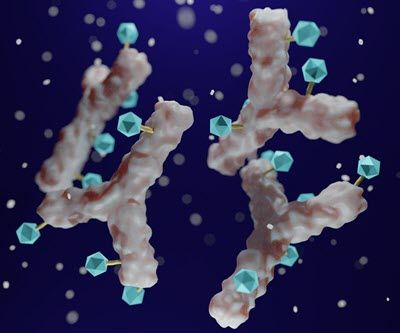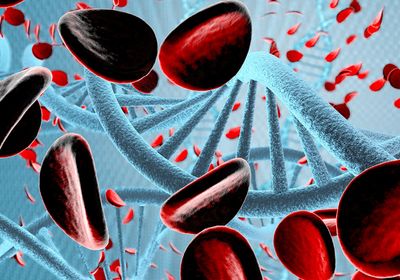ABOVE: Squamous cell carcinoma in human cervix cells © ISTOCK.COM, MD SAIFUL ISLAM KHAN
A new study takes several important steps toward being able to predict which HPV infections ultimately result in cervical cancer and which don’t, potentially paving the way to improved care or perhaps even preventive measures for those at risk. The study, published January 11 in Cell Genomics, involved a massive multi-omics approach that resulted in distinct categories of infections, some of which were closely associated with tumorigenesis and others that were comparatively innocuous.
Sanaz Memarzadeh, director of the gynecologic oncology lab at the University of California, Los Angeles, applauds the way the researchers capitalized on recent technological advances to study HPV and cervical cancer in far finer detail than what was even recently possible. “I commend them for taking this multi-omics approach, and I think we’re going to see more and more of this in cancer research,” she says.
How HPV can lead to cervical cancer
Human papillomavirus (HPV), which is the most common sexually transmitted infection in the US with roughly 5.5 million cases every year, is actually a large grouping of related viruses, the most dangerous of which have been linked to myriad cancers, including penile, anal, and throat cancers. However, the new study focused specifically on cervical cancer, the vast majority of cases of which are caused by or linked to HPV infection. In most cases, HPV infections go away on their own. But the virus can persist for years or indefinitely—and it can cause serious disease in a subset of persistent infections.
It’s well established in scientific literature that HPV, like many other viruses, integrates itself into the host genome, and that in doing so, HPV can cause a precancerous cervical condition called cervical squamous intraepithelial neoplasia 3 (CIN 3), which can then develop into cervical cancer. However, researchers have struggled to predict which infections will lead to CIN 3 and, eventually, cancer, explains University of Michigan oncologist and HPV researcher Diane Harper, citing a 2008 paper from The Lancet Oncology. That’s because HPV is a bit of a wildcard that can integrate its genetic material into countless places within the host human’s genome, resulting in unpredictable outcomes. As a result, she says, clinicians tend to respond to every HPV case as though it will progress. This study, Harper says, is an important step towards identifying which locations harbor the greatest risk and which, hopefully to the reassurance of the person carrying it, can likely be ignored.
See “HPV Havoc”
In the study, researchers managed to determine the characteristics of HPV integration points—that is, where in both the viral and human host genome it inserts itself—in particularly granular detail by conducting various sequencing experiments on cervical cancer samples taken from 98 women. Of them, only six lacked any signs of HPV-DNA fusion, and only two were HPV-negative. The study’s multi-omics approach compared clinical, pathological, genomic, transcriptional, proteomic, and phosphoproteomic data to determine that HPV integration sites that increase fusion transcripts (expression of the combined DNA sequence) are concentrated at particular locations and associated with particular sequences within the human genome—and that these so-called productive integration sites are associated with more severe disease progression, while silent integration sites (those that didn’t increase expression) were evenly scattered throughout the genome and had little impact on clinical outcomes.
In finding evidence for how the specific ways that HPV breaks and integrates into human genes can make it either silent or productive, the scientists who conducted the new study have provided the rest of the field with a valuable jumping-off point to explore more of the functional outcomes of how HPV interacts with its host, says Harper. She adds that her “hat’s off to them” for how much work it must have taken to determine the base pair and amino acid sequences of each integration site in each cervical cancer sample and comparing them to disease severity. As of this article’s publication, the researchers behind the study haven’t responded to The Scientist’s request for comment.
“They went through, and they did an amazing number of analyses,” Harper says. “They took each one of those sites and coded it so that they could find exactly what genetic sequences were associated with progression and what genetic sequences weren’t.”
“Because of that, I think it’s incredibly novel and creates a lot more understanding of which parts of the human DNA that HPV has injected itself into that we should be paying more attention to,” she adds.
In particular, the team found that the viral sequence at productive integration sites, especially the viral upstream regulatory region (URR), upregulated the E6 and E7 genes. These, Memarzadeh explains, express well-known “oncoproteins that are responsible for mediating much of the oncogenesis associated with the HPV virus.”
The team found that the tumors from those with productive integration sites had increased gene expression related to cell division and DNA replication, which the team connected to the increased aggression and more rapid progression of cervical cancer. Meanwhile, silent integration sites seemed to increase the immune response, perhaps also explaining why silent integration was associated with reduced oncogenesis and milder, if any, cancer.
Screening for which HPV cases will lead to cancer
Thanks to RNA sequencing and proteomics analysis, the team was able to identify differences between cervical cancers associated with productive integration sites, those associated with silent ones, and those in HPV-negative samples. These distinct tumor types were used to develop a preliminary predictive model that experts speaking to The Scientist say shows some promise as a future clinical tool that could screen women with HPV for precancerous biomarkers.
Memarzadeh notes that any clinical tool would need to be validated in a much larger cohort before it could be considered convincing enough to be used in medicine, though she feels that some of the study’s findings could inform future efforts to identify biomarkers and specific risk factors associated with HPV-linked cervical cancer. Harper shares similar sentiments, though she notes that it doesn’t do much good to place women with HPV into various groups based on their risk of developing cervical cancer, because right now there are no clinical tools beyond surgery to remove CIN 3 or cancerous lesions.
“It doesn’t matter, at this point, if we stratify them [based on] if they do or don’t have productive HPV if we can’t do anything about that,” Harper says. “The rate-limiting step is that we don’t have anything else to offer women. It doesn’t make sense to stratify them.”
However, she notes that the pathways identified in the study could help researchers develop pharmaceutical interventions to either block productive HPV integration or prevent it from causing cancer. However, she says that before that can happen, researchers ought to look at samples taken from precancerous HPV infections as well, to see if the same findings hold up.
Still, caveats and unanswered questions aside, Harper says that this is an important study that she was thrilled to see published, as it offers a roadmap toward unraveling some of the mysteries of HPV-associated cancer.
“The majority of people with CIN 3 never get cervical cancer,” she says. “We have not been able to figure out what the markers are, or why CIN 3 stays CIN 3 or goes into cancer. This paper gives us at least one answer. . . . This paper is a good piece of evidence that shows us we may be able to someday determine who these women are.”







